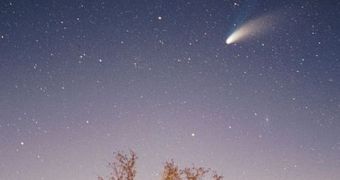With the passing of a medium-sized asteroid past Earth on June 27, the issue of space impactors has again been brought to the spotlight. Based on historical evidence, astronomers are wondering whether our planet is indeed overdue for a huge collision.
Over millions of years, numerous comets and asteroids have slammed into our planet, producing a vast array of effects. Some have led to mass extinction events, such as the one at the Cretaceous-Paleogene (K-T) boundary, while others have had only limited, localized impact.
The K-T impact took place some 65 million years ago, and led to the extinction of dinosaurs, alongside a large number of other species. Only a fraction of lifeforms on Earth survived the massive devastation.
Other planets in the solar system were equally devastated by impacts, including Jupiter over the past few years. Astronomers noticed not one but two collisions spread only a few years apart, which is extremely often in cosmological terms.
Earth itself is constantly being battered by space impactors, about once every million or so, and some are beginning to study if we are overdue for an impact or not, Daily Galaxy reports.
“The threat of the Earth being hit by an asteroid is increasingly being accepted as the single greatest natural disaster hazard faced by humanity,” explains University of Southampton School of Engineering Sciences team member Nick Bailey.
He and his group developed the NEOimpactor software, which is capable of ranking nations based on how much they stand to lose during such a massive event. NEO stands for near-Earth objects, the designation NASA gave to asteroids and comets close to Earth.
China, Indonesia, India, Japan and the United States were found to be most at risk for losing a huge portion of their population. The most severe economic and infrastructure effects will be felt by United States, China, Sweden, Canada and Japan.
Overall, the most at-risk countries are China, Indonesia, India, Japan, the United States, the Philippines, Italy, the United Kingdom, Brazil and Nigeria. “The consequences for human populations and infrastructure as a result of an impact are enormous,” Bailey warns.
“Nearly one hundred years ago a remote region near the Tunguska River witnessed the largest asteroid impact event in living memory when a relatively small object (some 50 meters in diameter) exploded in mid-air,” he adds.
“While it only flattened unpopulated forest, had it exploded over London it could have devastated everything within the M25,” the expert says. The Tunguska explosion was more powerful than an atomic blast.
“Our results highlight those countries that face the greatest risk from this most global of natural hazards and thus indicate which nations need to be involved in mitigating the threat,” the expert says.

 14 DAY TRIAL //
14 DAY TRIAL //